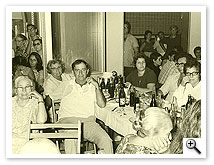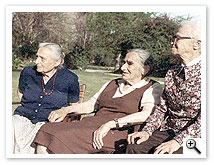Degania has differed in its way of life from the Collectives
and the Kibbutzim which were established after it.
- Degania has never had separate children’s quarters.
- Degania has always had hired labor because realism has
dictated that maintaining the Kibbutz economy and industry would not be possible
without the help of workers who are not members.
When the idea of collective life was agreed upon, one of the
central issues on the agenda was that of determining the size and scope of the
framework in which to maintain it. In order to demonstrate what this means, we
will compare Degania ‘A’ to Ein Harod. The main idea in the establishment of Ein
Harod by the Gdud Ha’avoda (meaning “work battalion”) people was that of a big
kibbutz, in which the number of members would not be limited, and the assumption
that this framework would cause the members’ different viewpoints to melt within
it, and bring about the creation of an exemplary society. As opposed to this
view, on Degania ‘A’ the view was held that the members are the main thing, and
that it is they who will determine the form and the nature of the framework.
Hence, the members of Degania ‘A’ upheld the idea of “the intimate group”, which
in its essence must be small and ive, and from this viewpoint is derived a
way of life differing from that of the Kibbutz, such as private quarters and the
strengthening of the family nucleus. Every question, small or big, was
deliberated by everyone, and not only questions relating to the farm but those
pertaining to personal life as well.
“A beautiful life” – thus they defined the social aim;
closeness within the internal relations between member and member and honorable
relations on the outside. A life of work and creativity – a life of culture –
is what they discussed and argued over many a night in the kibbutz yard. Over
time, they formed the principles of the “beautiful way of life”: equality,
liberty and democracy.
 |
 |
|
"Tzavta" (togetherness) |
Yael Frenkel, Zila Berkovitch, Yehudit Gilad
|

|

